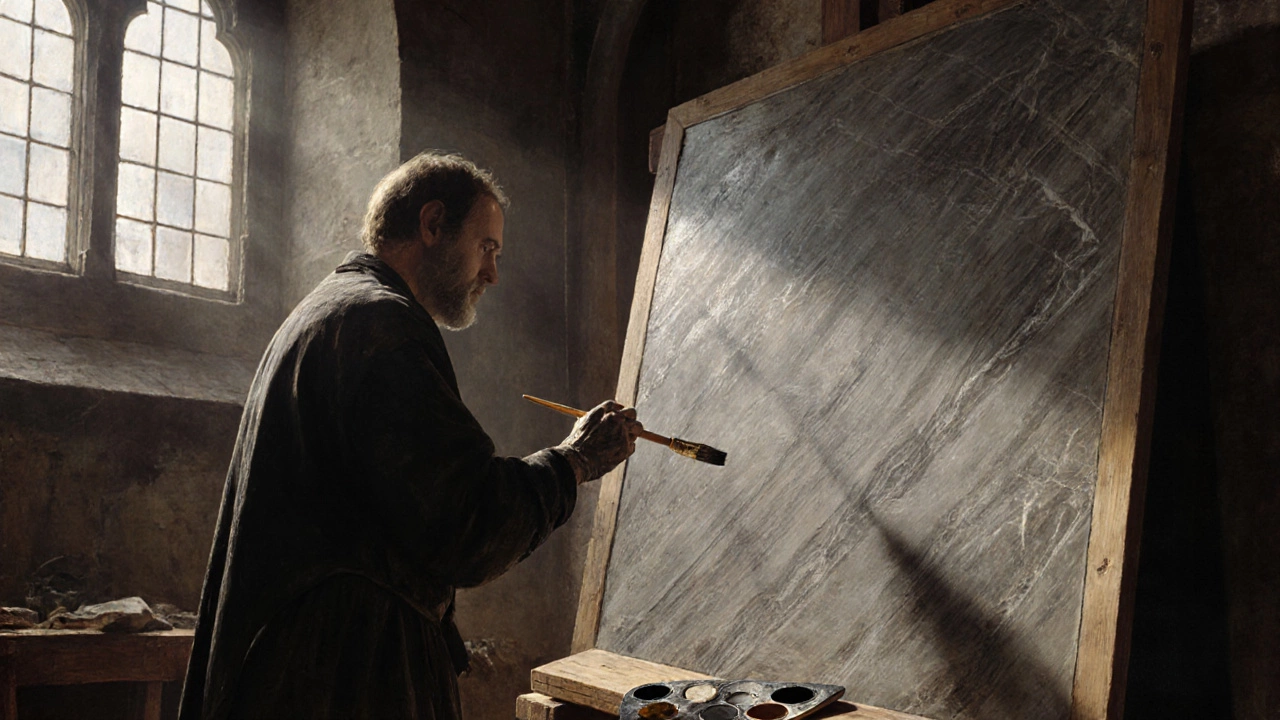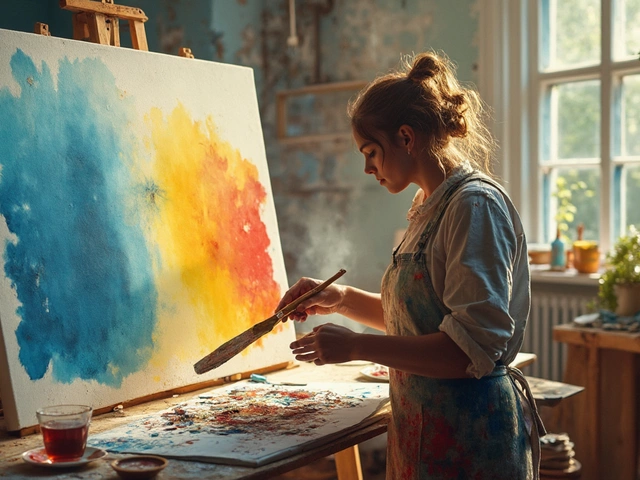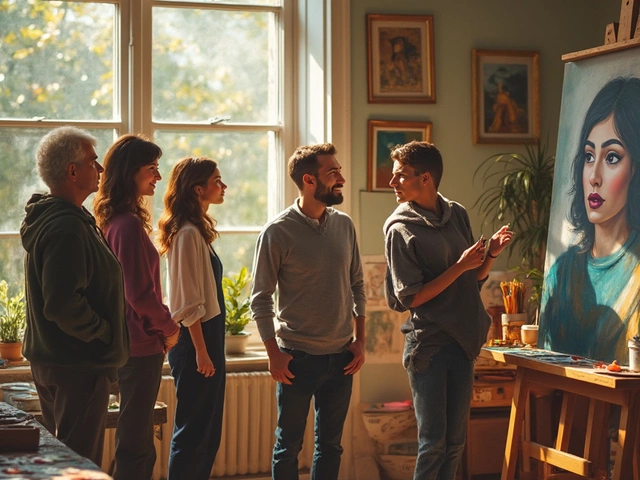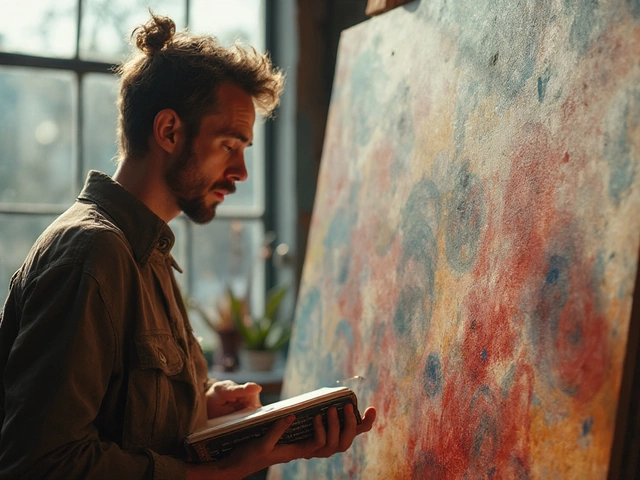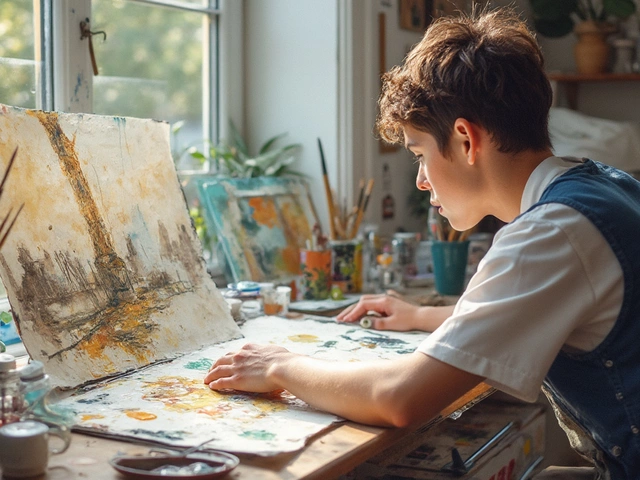Grisaille Value Scale Generator
Create Your Grisaille Value Scale
Adjust the parameters below to generate a custom grayscale value scale for your grisaille work.
Your Generated Scale
Click "Generate Value Scale" to see your custom grayscale palette.
Imagine a painting that looks like a sculpture, all shadows and light, but done entirely in shades of gray. That’s the magic of the grisaille technique, a method artists have used for centuries to create depth without color.
Key Takeaways
- Grisaille is a monochrome painting style that uses only gray tones.
- It originated in the Renaissance and was popular for underpaintings and decorative panels.
- Typical media include fresco, oil, and tempera, each with its own workflow.
- Grisaille can serve as a standalone artwork or as a base for color glazing.
- Modern artists still use grisaille for dramatic effect and as a teaching tool.
What Is the Grisaille Technique?
Grisaille technique is a painting method that relies exclusively on shades of gray to model form, light, and shadow. By stripping away hue, the artist forces the eye to focus on tonal relationships, creating a sculptural illusion on a flat surface. Historically, grisaille served two main purposes: as an underpainting to establish values before adding color, and as a finished, monochrome piece meant to showcase mastery of light.
Historical Roots of Grisaille
The technique traces back to the early Renaissance, where masters sought realistic depth in religious altarpieces. Jan van Eyck employed grisaille in the Ghent Altarpiece to mimic marble statues, demonstrating that paint could achieve the same visual weight as stone.
During the French Baroque period, artists like Poussin used grisaille for decorative wall panels, often gilded later to simulate relief sculpture. By the 18th century, grisaille had become a pedagogical tool in academies, teaching students the fundamentals of value before tackling color.
Materials & Methods: From Fresco to Oil
Grisaille isn’t tied to a single medium. Three primary media dominate the tradition:
- Fresco - a technique where pigment mixed with water is applied to wet lime plaster. The plaster absorbs the pigment, making the grayscale layers durable and ideal for wall murals.
- Oil paint - allows fine blending of tones and slower drying times, giving the artist greater control over subtle gradations.
- Tempera - pigment bound with egg yolk, prized for its buttery texture and quick-drying nature, historically used for panel paintings.
Choosing a medium depends on the project’s scale, surface, and desired finish. Fresco excels on plaster walls; oil offers richness for canvas; tempera is perfect for small wooden panels.
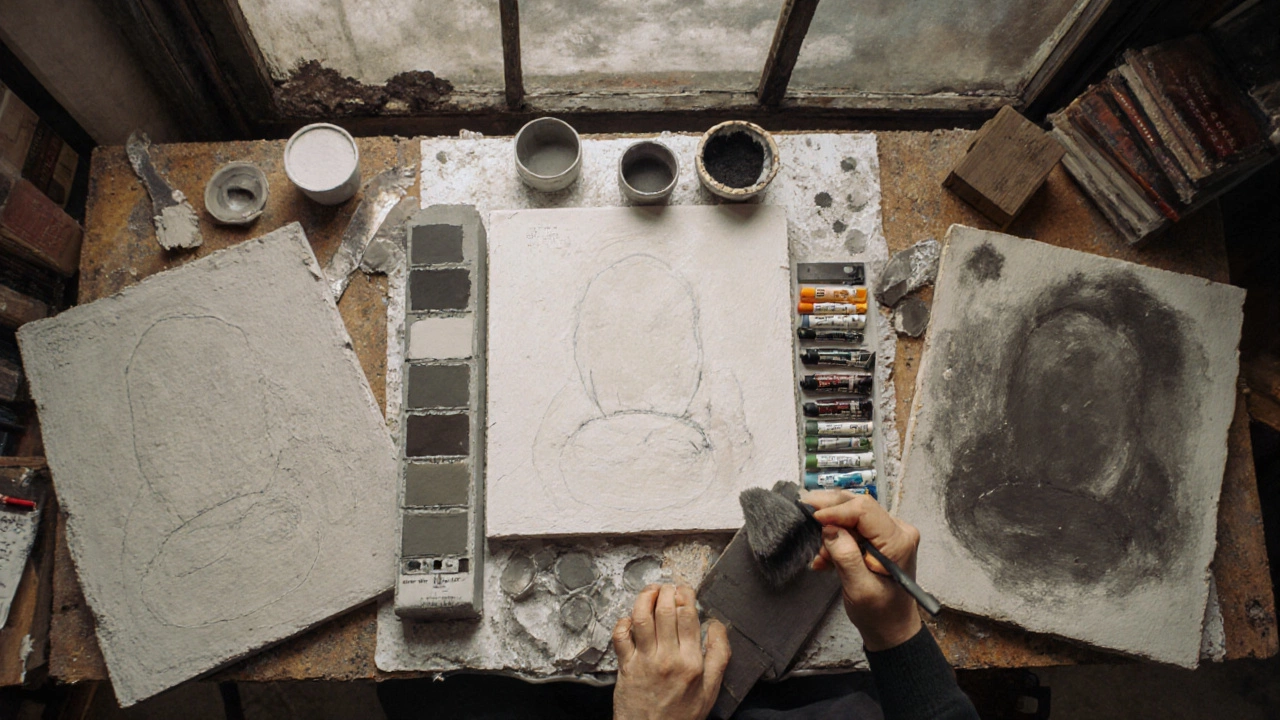
Step‑by‑Step: How to Create a Grisaille Painting
- Prepare the surface. For fresco, apply a fresh layer of lime plaster. For canvas or wood, prime with a neutral gray gesso.
- Sketch the composition. Use a charcoal pencil or thinned oil to outline major forms.
- Establish a value scale. Mix a range of gray tones-from near‑white to deep charcoal-by adding black or white to your chosen medium.
- Block in the darkest shadows. Start with the deepest values; this anchors the structure.
- Build mid‑tones. Layer progressively lighter grays, blending edges to suggest volume.
- Add highlights. Use the lightest gray (sometimes pure white) to define the brightest spots.
- Refine edges. Soften transitions where form curves; sharpen edges on areas meant to pop.
- Optional glazing. If you want a colored version, apply thin, translucent glazes over the grisaille base.
Tip: Keep a small “value palette” on the side and step back frequently; the lack of color makes it easy to miss subtle shifts.
Grisaille vs. Related Techniques
| Aspect | Grisaille | Chiaroscuro | Polychrome Underpainting |
|---|---|---|---|
| Color Palette | Gray tones only | Limited palette (often browns) emphasizing light/dark | Full color but muted |
| Primary Goal | Model form through value | Create dramatic contrast | Establish hue relationships before final layers |
| Typical Medium | Fresco, oil, tempera | Oil, charcoal | Oil, acrylic |
| Final Appearance | Monochrome, sculptural | High contrast, often moody | Colorful after glazing |
Practical Tips & Common Pitfalls
- Mix grays with care. Adding a touch of the base pigment (e.g., yellow in tempera) can prevent a flat, lifeless look.
- Avoid over‑blending. Some rough edges preserve the illusion of form.
- Monitor lighting. Work in neutral daylight; colored walls can skew your perception of gray values.
- Test on a scrap. Before committing to a large surface, experiment with your chosen medium’s drying time and blending properties.
- Use a limited value scale. Too many shades can muddy the composition; five to seven distinct tones usually suffice.
Frequently Asked Questions
Can I use grisaille on a modern digital canvas?
Absolutely. Digital painting programs let you create grayscale palettes and lock hue sliders, mimicking the traditional process. Many concept artists use grisaille to block out lighting before adding color.
Is grisaille only for underpainting?
No. While it began as a preparatory layer, many works-especially in the Baroque period-were intended as finished grisaille pieces, admired for their sculptural depth.
What’s the difference between grisaille and chiaroscuro?
Grisaille restricts you to gray tones, focusing purely on value. Chiaroscuro also emphasizes light and dark but often incorporates a limited color range to heighten drama.
Which medium is best for beginners?
Acrylic tempera on primed wood is forgiving because it dries quickly and can be re‑worked with a little water. It lets newcomers experiment without the long drying times of oil.
How do I transition from grisaille to a full‑color painting?
Apply thin, transparent glazes of color over the grayscale base. The underlying values will guide the hue intensity, creating a luminous effect.
Next Steps
Ready to try grisaille yourself? Start with a simple still‑life on a small panel, use tempera for quick drying, and keep a five‑tone gray palette at hand. As you gain confidence, experiment with larger fresco projects or digital block‑outs. For deeper study, look up the “grisaille panels of the Château de Fontainebleau” or enroll in a local atelier that focuses on classical techniques.
